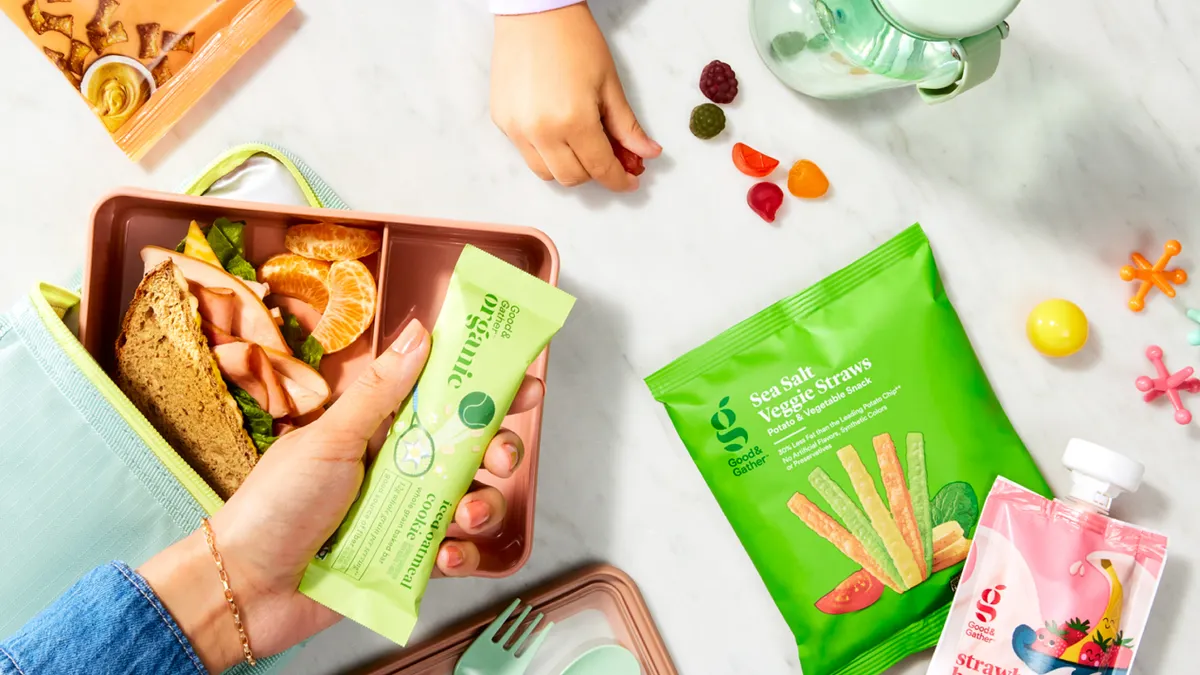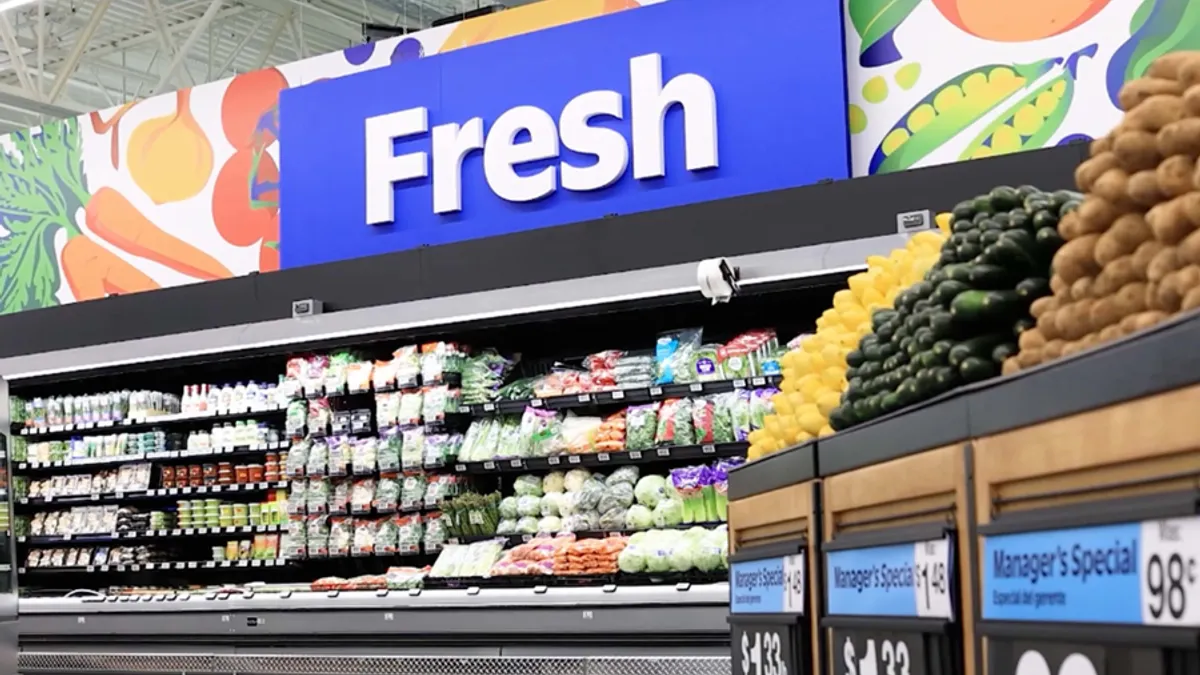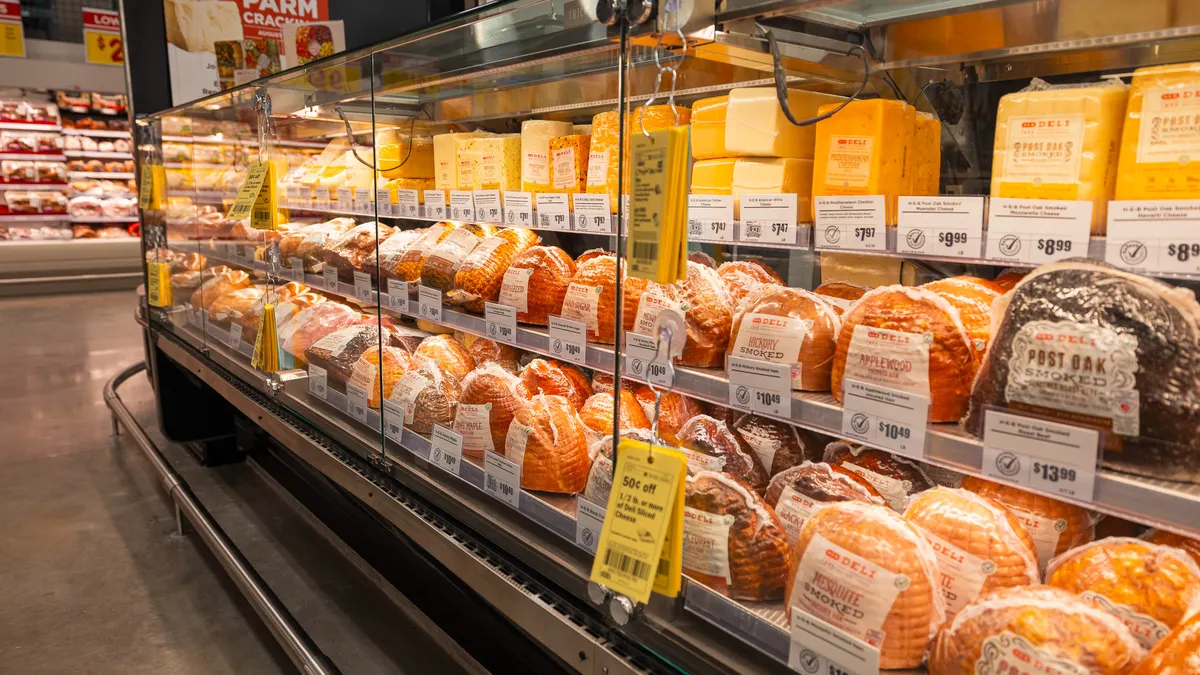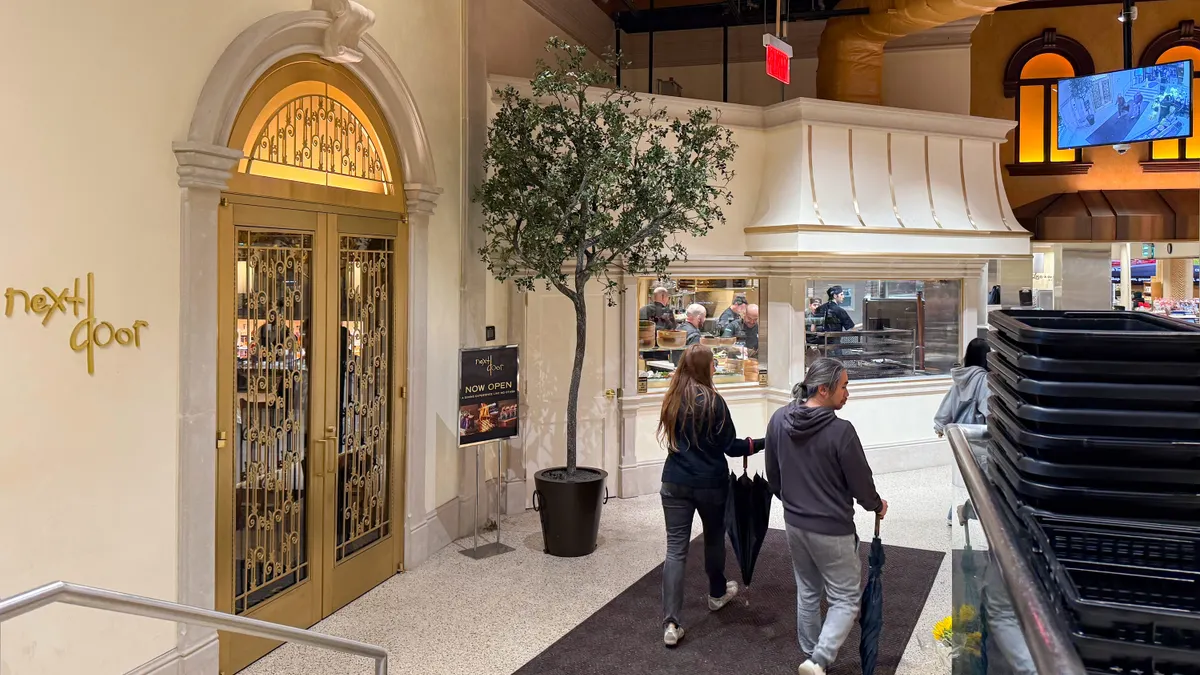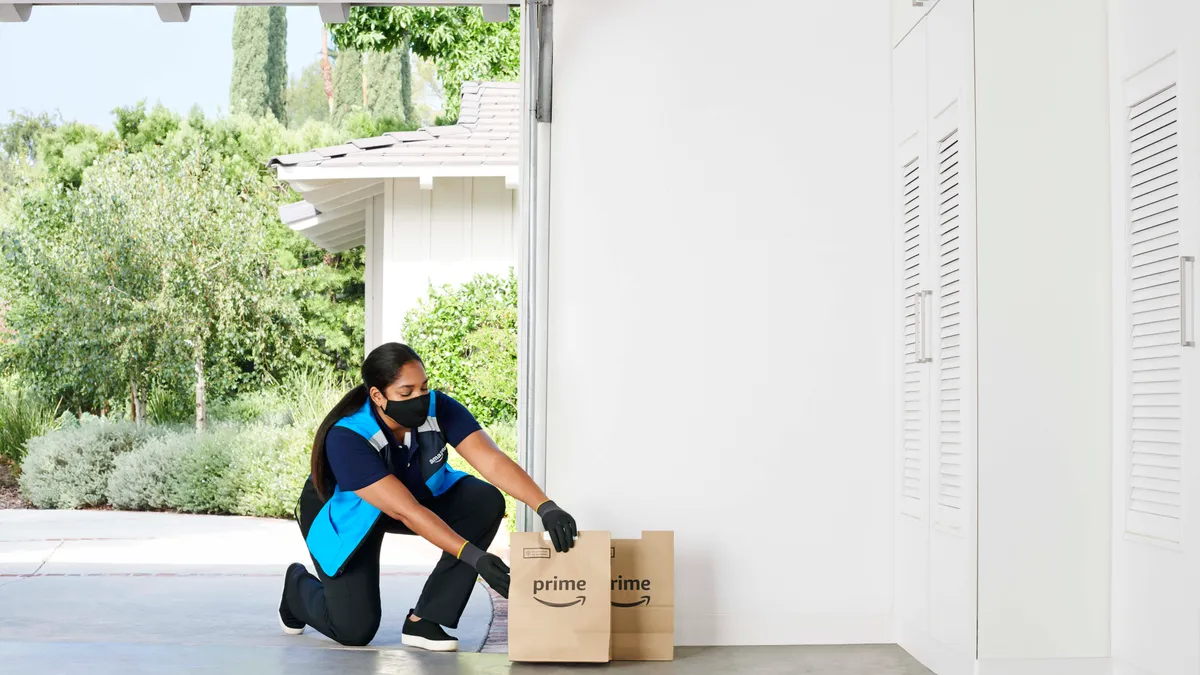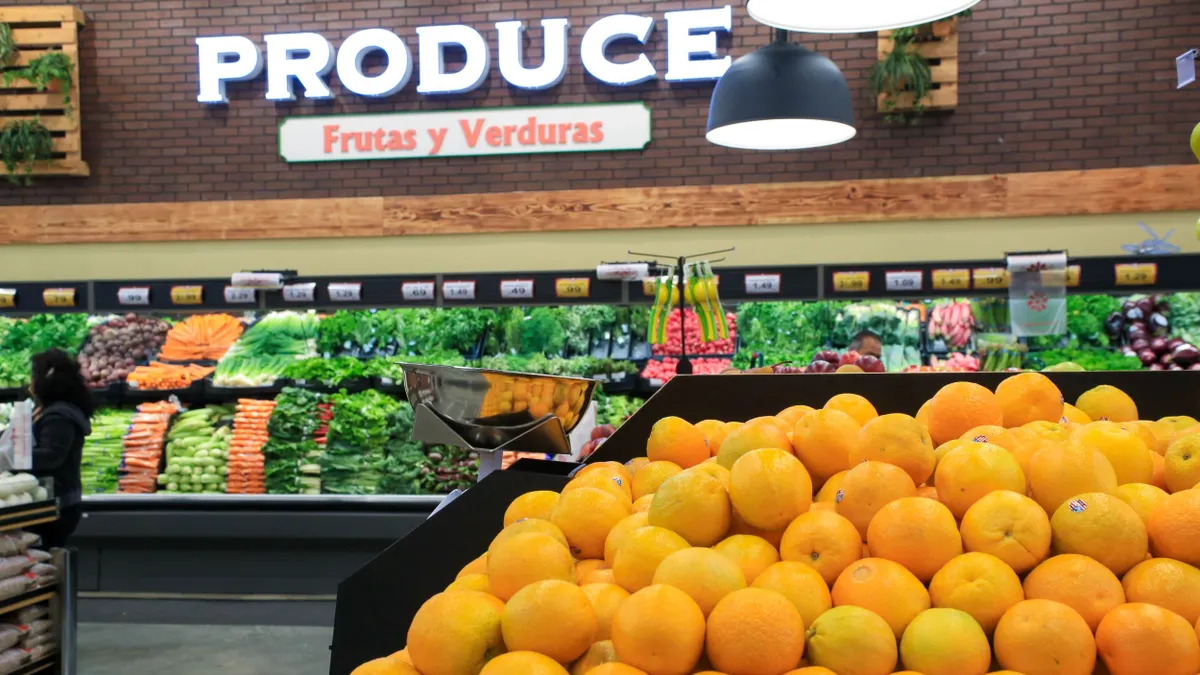During a presentation at the Groceryshop conference last week, Don Fitzgerald, group vice president of merchandising and marketing with Mariano's, read a testimonial from a customer who gushed about the chain's wide selection of prepared foods and restaurant options. She said there were so many great selections — salad bars, barbecue and sushi stations, just to name a few — that she didn't know where to start.
"Notice she didn't say, 'I want to stay home and order online,'" Fitzgerald said, pointedly, to the audience.
At a show dominated by talk of e-commerce, artificial intelligence and all things digital, it was easy to overlook a key insight that one presenter after another made — that for all the tech innovations rushing into the grocery space, what wins at the end of the day is a great analog store experience. Indeed, despite accelerating adoption of e-grocery, 92% of shoppers still do most of their grocery shopping in stores, according to new data from the International Council of Shopping Centers emailed to Grocery Dive. Only 2% of consumers regularly shop for groceries online.
And even when that day comes when online shopping accounts for double-digit sales and every customer starts their shopping journey on their phones, the store is what they'll ultimately come back to, many said.
Along with all the vendors focused on back-end technology were a curated selection of grocers — Mariano's, Eataly, Lowe's Foods and China's Hema market — that discussed how they're making their stores not just shopping trips, but destinations. Here are five lessons from those talks.
Lesson 1: There are no shortcuts
There's a lot going on inside Eataly's stores, from the many restaurant options to cooking stations and artisan stalls selling authentic bread, pasta, seafood and more. Although Eataly only has five locations — with another set to open next month in Las Vegas — it has become an outsized presence in the major markets where it operates.
According to Ennio Perone, vice president of business strategy and marketing with Eataly, there's even more activity going on behind the scenes as the company's managers and employees rush about in a chaotic ballet of preparation, replenishment, quality control and customer service. Throughout his presentation at Groceryshop, Perone repeated the word "crazy" when discussing the chain's day-to-day operations.
"It is crazy doing the day-to-day planning," he said. "There are no shortcuts, no tricks to save a few cents. It's very labor intensive."
Mounting competition has supermarkets increasingly focused on operational efficiency. But when the selling proposition is quality, a grocer's standards must be exacting, Perone said. As an example, he pointed to the store's spaghetti pomodoro, a seemingly simple dish that becomes more complex when considering the pasta must be dried for eight hours before it's shipped from Italy, while the sauce is made by hand every day in-store.
Likewise, Mariano's Fitzgerald said that a lot of research, number-crunching and store-level coordination goes into making the shopping experience as seamless as possible.
"A lot of this is intuition-based merchandising. but believe me this is not as easy as wine goes with cheese," he said.
Lesson 2: Marry the art and the science of retail
A lot of that behind-the-scenes work, Fitzgerald said, involves mining customer data and holding focus groups with consumers.
For all its focus on old-school merchandising and top-down planning, the company used shopper data to help it determine where and when to open its first 50,000-square-foot store in 2010, and every store after that. It has also informed Mariano's product mix and new offerings, like an organic-only salad bar and additional self-service prepared food stations.
"There are no shortcuts, no tricks to save a few cents. It's very labor intensive."

Ennio Perone
Vice president of business strategy and marketing at Eataly
Fitzgerald credited Kroger as an important resource for the company. The grocer bought Roundy's, of which Mariano's is a part, in 2015 and has since implemented its industry-leading data science technology.
"Marrying the voice of the customer and the data was how we married the art and the science of retail and led to the 44 stores that we have today and that have a 50% market share in Chicago."
Perhaps no retailer marries the art and science of retail like Alibaba-owned Hema market, which has 65 stores in China. The chain combines an app-based shopping model and easy home delivery with a store experience focused on fresh foods, including a seafood restaurant where customers can select their next course from one of several live tanks.
Jing Wang, business intelligence manager with Alibaba Group, said the company is focused on bringing in families for meals and shopping, and noted that the chain uses data to help it develop new offerings — like lobster-flavored mini cakes.
"It's a vision that we can digitize the entire retail value chain, from product development to marketing, customer service, merchandising, payment logistics, everything," she said during a presentation.
Lesson 3: Don’t be afraid to do the chicken dance
Meanwhile, Tim Lowe, president of Lowes Foods, extolled the virtues of qualitative or "small" data, as he called it — the findings the company gathers by meeting with customers and observing them in their homes. This way, he said, Lowes can figure out what consumers are looking for without relying on them to precisely articulate those needs.
"Our job as a business is to go out and find those unmet needs," Lowe said during a Groceryshop presentation. "That's where the small data comes in."
It was through this use of small data that Lowes learned its shoppers desired more connectivity to one another and to their stores, and to have more of a fun experience when they went shopping. So Lowes decided to rebrand its chicken section, and to hold regular events — including a daily "chicken dance," complete with a costume-wearing employee — that upped the experience factor.
The chicken dance idea might sound ridiculous, said Lowe, but for customers it was a one-of-a-kind experience that's generated social media posts and YouTube videos. Chicken sales have gone up fivefold since the company rebranded, he said.
"What we're discovering in small data is that no longer do we want to be a grocery company — we want to be an entertainment company that sells groceries," said Lowe.
Lesson 4: Hire smart and empower workers
Retailers are only as good as their workers, Fitzgerald said. Not only that, but stores must rely on their employees to bring new ideas to their jobs and to the company.
To that end, Mariano's has focused on hiring employees from outside the food retail world. This includes workers with backgrounds in hospitality, health care, academia and more.
"Layer on great assortment on top of great people and you can be bold with the offering," said Fitzgerald.
At Eataly, managers hire workers who are passionate about their roles. The cheese mongers truly love cheese, Perone said, while the pasta makers are perfectionists. In addition, each store has its own separate management team, including marketing staff.
Service roles, in particular, require knowledgeable staffers that must be empowered to work creatively. That way, said Perone, their passion will become contagious and customers will get the in-depth information they want.
"We don't talk about the wine itself, we always want to go three or four layers deep," he said.
Lesson 5: You're going to fail — but you're also going to learn
Despite its high sales and customer traffic, Mariano's has had numerous initiatives flop, said Fitzgerald. This includes a Nutella bar along with a Veg'd vegan bar that had to close down recently. But those failures haven't deterred the chain from trying new things.
"We need to stay curious and keep exploring," said Fitzgerald. "A big part of exploration is failure."
The Veg'd line, for instance, yielded research and development insights that lead to new vegan options that have performed well in stores, he noted.
"What we're discovering in small data is that no longer do we want to be a grocery company — we want to be an entertainment company that sells groceries."

Tim Lowe
President, Lowes Foods
Retailers need to be willing to fail, retailers said — but they also need to be sure that every new product and initiative is the best it can possibly be. Vicki Eickelberger, senior vice president and managing director with Big Red Rooster, a branding and design firm, said that grocers are going to be judged against their competition and much more.
"Your shoppers aren't just benchmarking their experience in your store with other grocers," she said. "They're benchmarking across their entire shopping pattern."







